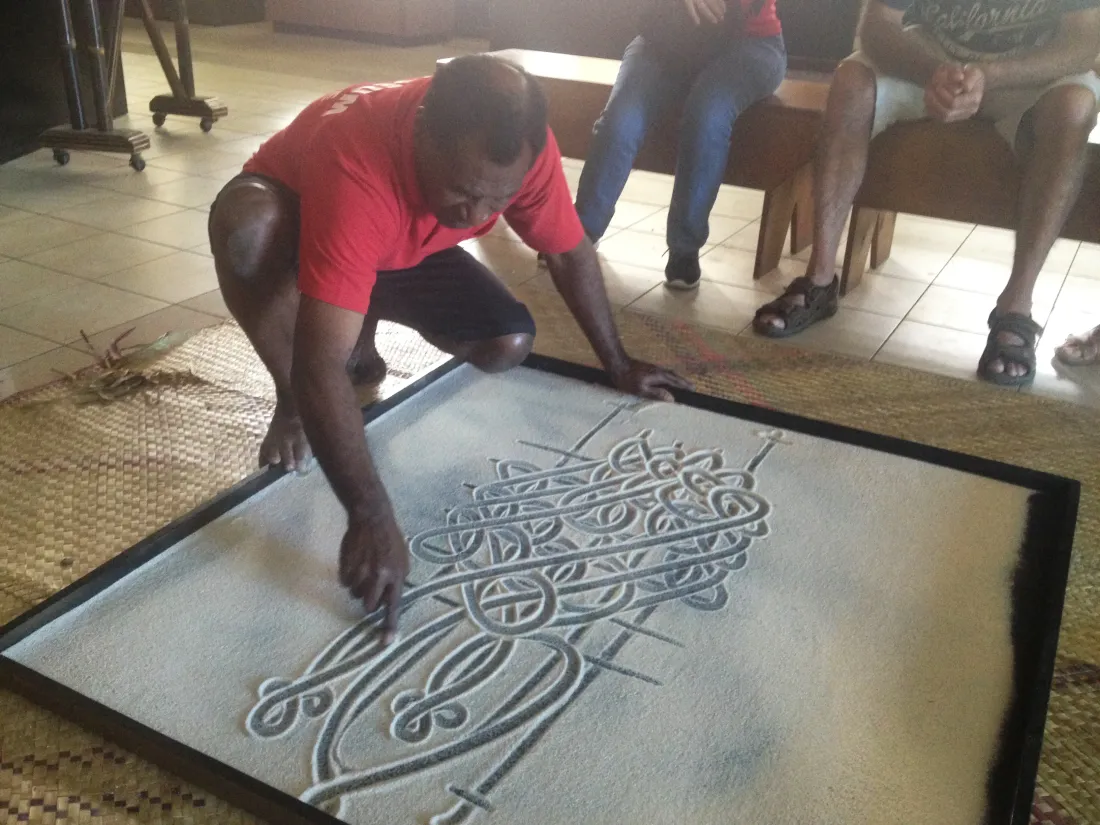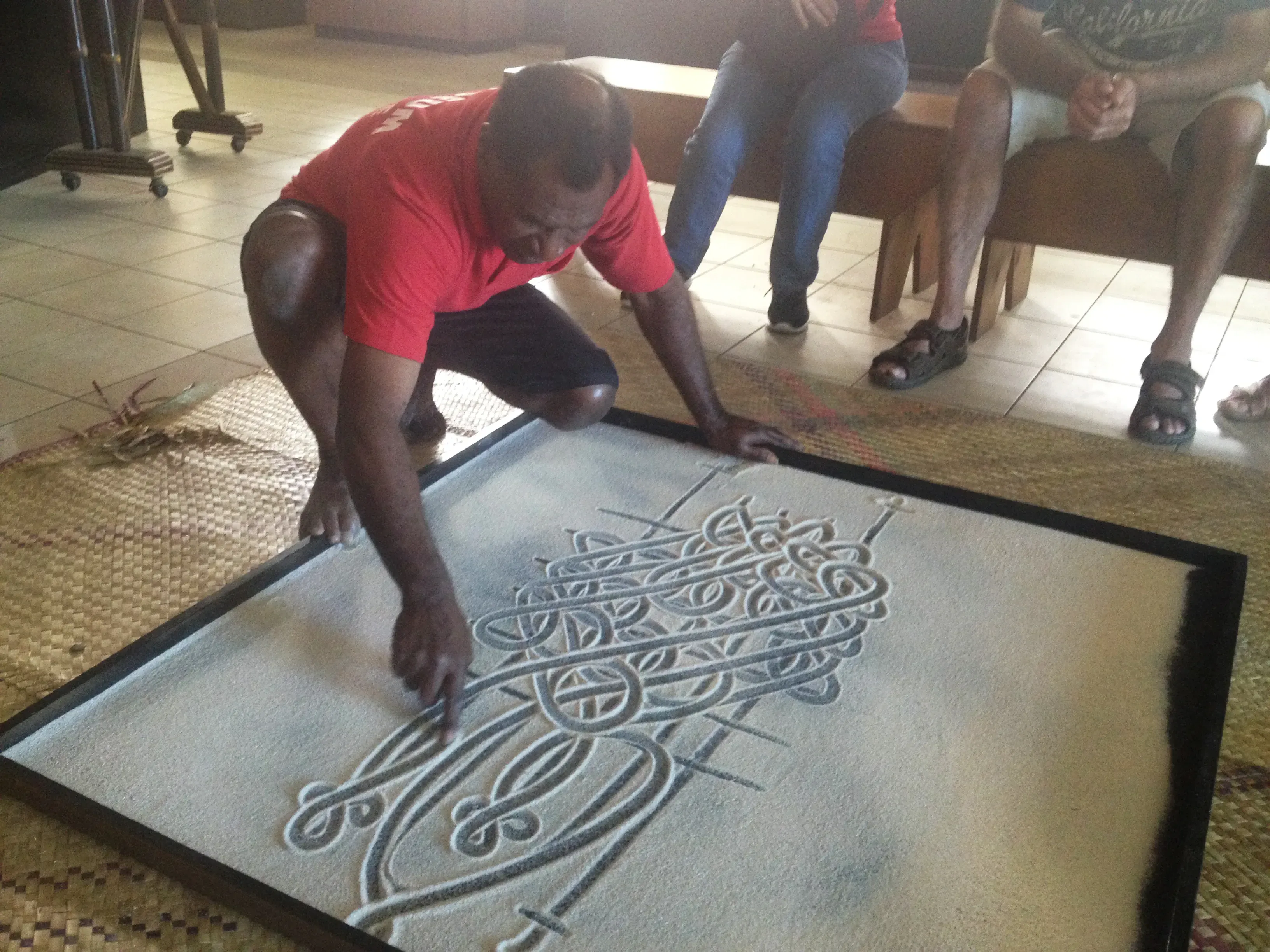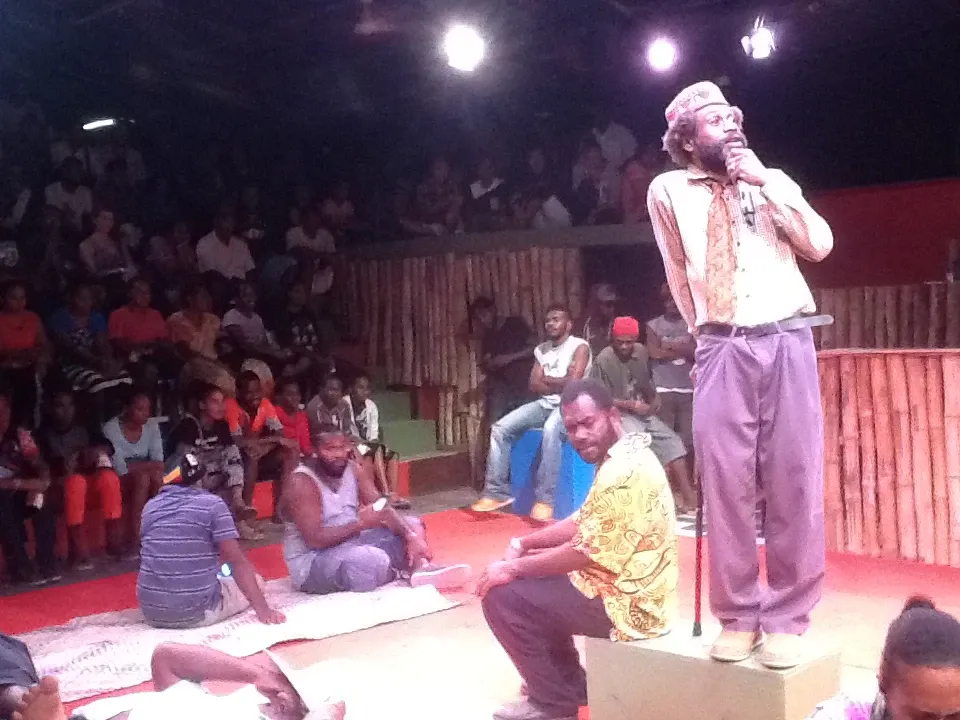Building Better Roads
Written by


In Vanuatu we drive on roads part-funded by New Zealand, and sealed by New Zealand firm Downer. We meet many Ni-Van locals who have been to New Zealand: John, a taxi driver on the island of Espiritu Santo awaits news of a scholarship to complete an MA in Mathematics at Victoria. Willie, who looks after the turtles at a sanctuary on Moso Island, picked grapes in Central Otago. Every year, men from the small remote village of Ranon on the volcanic island of Ambrym fruit-pick in the Nelson Bays. They wear silver fern adorned baseball caps proudly round here. The village of Port Olry on Santo did a whip-around after the Christchurch earthquake - their medical centre was funded by the Canterbury based Pacific Leprosy Foundation.
So why then do we know so little about our Pacific neighbours like Vanuatu? And why, given New Zealand’s leading role in contemporary Pacific art, do we not exchange within the Pacific more? Our relationship need not just be one-way developmental Aid street. When it comes to sustainability and community we have much to learn. Don’t we want to understand more, in exchange for contributing our taxes to an independent Pacific’s growth?
In An Oceanic Conversation in May I wrote on the disparities between New Zealand and Australia’s treatment of Pacific Art. In a group exhibition at the National Gallery of Victoria I saw astonishing figures from Ambrym. On Ambrym I heard beautiful water music being made by women in the ocean, the astonishing Rom Dance and great carving. Yet even on a visit to the capital, Port Vila, what a country like Vanuatu has to offer us goes deep culturally in other ways.

Wan Smolbag
We stay with friends working, like many other New Zealanders in the Pacific, through New Zealand volunteering agency Volunteer Services Abroad. First night we’re off to the Mele Beach Bar for their now famous free fire, dance and circus show on the beach after sunset, which has 500 or so packed onto the sand - tourists and locals. What the performance might lack in Cirque du Soleil glitz and feats it makes up for in local flavour and a breezy Pacific Reggae spirit. Community rooted, the young of the village of Mele showcase their talents with flame. The work would be a guaranteed hit at Oriental or Mission Bay beaches as part of an arts festival.
This show began as a partnership between the bar and Wan Smolbag Theatre. Wan Smolbag (national language Bislama for One Small Bag) is a remarkable professional development and arts organisation. Established in Vila in 1989 as an amateur theatre group, they now have a core professional group of 16 actors and other actor ensembles touring Vanuatu, producing plays, films and an excellent television series Love Patrol (viewable on youtube). Their work is squarely based on development issues, looking to write on relevant issues of education, health, the environment, politics, youth and gender, with funding from Oxfam, Australian Aid and, yes, the New Zealand Aid programme through the Ministry of Foreign Affairs and Trade.
Wan Smolbag’s work has been so successful it’s extended to providing health clinics, youth centres (a clearly visible strength – they feel like a community hub), a conservation network and a sports centre. Their Facebook group is a great place to get a sense of the vibrancy and diversity of their work. The heart remains the arts and its ability to enable social change.
Social change is a buzz-phrase we hear increasingly around the arts in New Zealand, alongside ‘audience development’ in terms of performing arts reaching a wider demographic. Yet developmental theatre has a stigma in New Zealand of serving up theatre where the works creakingly, polemically arch themselves around laying out facts rather than giving us believable characters and absorbing drama: telling rather than showing. Attending Wan Smolbag’s latest play Hotel Kalifonia I was impressed to watch a strong dramatic play with comedic flourishes with an excellent well-directed cast. Whilst the Bislama was beyond me, it struck me as anything but predictable.
Hotel Kalifonia centres on government corruption - the cabinet holed up in a bar for a surprise birthday party that turns ugly and leads to an attempted coup. This against the local background of the jailing of 14 Vanuatu MPs last year for giving and receiving corrupt payments. Our own great political theatre writer Dean Parker would, I think, have been impressed.
And the audience development? The theatre was packed with young people, ex-pats and the middle-aged alike, enjoying a work that helped them unpack issues at the heart of the country’s anxiety. It helps that there’s a set ticket price of about 60 New Zealand cents (50 vatu) - this in a country where supermarket food, alcohol and state education are as expensive, if more so, than in New Zealand.
This felt deeply ironic. Last April I understand the New Zealand government confirmed a $3.5 million dollar grant to Wan Smolbag for five years. More recently in New Zealand we’ve watched funding to the ballet and symphony orchestra increase whilst the commitment to Creative New Zealand looks more uncertain. Can we really say the New Zealand government values the youth and community development role the arts plays in New Zealand as it does in Vanuatu?

Space for Exchange
My inbox seems to increasingly fill up with opportunities for artists for residencies in Asia. Might more residencies in the Pacific assist our understanding and sense of our place?
A prime candidate in Port Vila is The Suzanne Bastien Foundation, a quality arts institution that seems to sit off the current tourist map.
Port Vila isn’t notable for the high profile of its cultural institutions. Other than an Alliance Francais gallery space, there’s no public gallery in the CBD, the public library, charmingly if disturbingly, doesn’t look like its been replenished since the 1970s and the National Museum, the Vanuatu Cultural Centre is wonderful but small and a bit of a walk. The demonstration at the centre by museum guide Edgar Matasanvul of sand drawing remains a highlight of my trip – this unique visual form of script and storytelling using one finger in a continuous line is something to behold done expertly.
However a short taxi ride out of town near Erakor Island brings you to the Suzanne Bastien Foundation’s excellent contemporary art gallery, with a great library and Art New Zealand in stock.
Back in the 1970s Bastien with Hardison Roru established a gallery in Vila supporting local and visiting French artists. Bastien went on in 1987 with French painter Patrice Cujo to set up the Nawita Association for the promotion of contemporary art. In 2006 Bastien set up the Foundation and the gallery opened 2013, sadly a month after the 91-year-old passed.
The foundation has been established to be a meeting place and venue for workshops, resources and exhibitions for artists, providing a place for visiting and local Vanuatu artists to work. Well presented there’s an excellent diversity of painting from Vanuatu and visiting French artists on the walls, with good supporting information. It really assists with a better understanding of the country.
Pride of exhibition place, and worth the visit alone, is a series of large mixed media paintings by Patrice Cujo Maps Blong Vanuatu. Cujo combines in layers Western mapping and Vanuatu weaving, data and mythology, and the figurative and abstract to dynamically tell the stories of Vanuatu’s islands from a European perspective. These adventurous, alternately clown-comic and mystical anthropomorphic creations, completed between 1987 and 1991 give monumental human spirit to each distinctive island. It’s as if the textural spirit of the local Ni-Van culture and the mapping of foreign powers have been crumpled up together and collaged within an elegant post-modern set of frames within frames.
In an airy barn opening out to a gorgeous garden, it’s a set-up begging to be the site for an artist residency programme with New Zealand. Creative New Zealand and the Ministry of Foreign Affairs and Trade: step right up.
Next door is the extraordinary and quite wonderfully bonkers Foundation Michoutouchkine-Pilioko - part dark, earthy display of great deteriorating Vanuatu cultural artefacts and part riotously-colourful outsider art installation, featuring cats, mannequins and vodka bottles in a surreal collage with a Pacific twist under the palms. I’ve never seen so much yellow.
Russian artist Nicolai Michoutouchkine passed away in 2010, but his partner Aloi Pilioko continues to create colourful, beguilingly naïve figurative paintings of Ni-Van people and animals in a joyous dance. A suite of recent paintings adorn the walls of the excellent French restaurant L’Houstalet in Vila, the place where in 1980 the declaration of Vanuatu’s independence was signed. Pilioko provides a sweet uncomplicated expression of the independent joie de vivre of contemporary Ni-Van life.